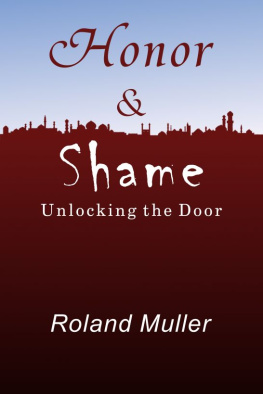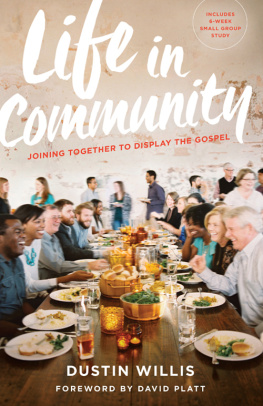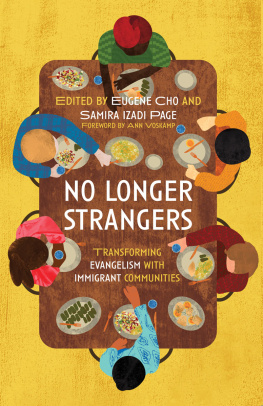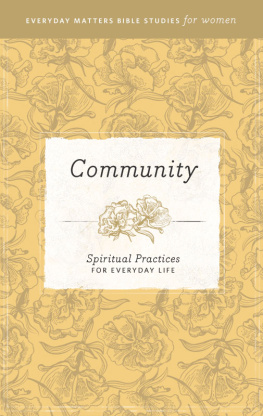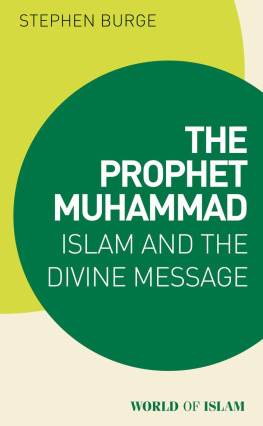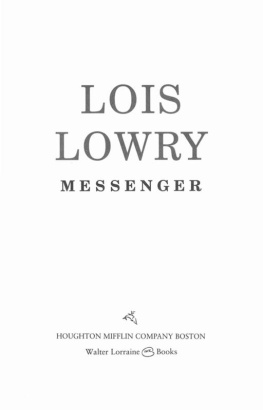The Messenger
The Message
&
The Community
Three Critical Issues for the Cross-Cultural ChurchPlanter
Fourth Edition 2016
Independent Scholars Press
Roland Muller
The Messenger, the Message and the Community (MMC) byRoland Mller
Copyright CanBooks 2015
All rights reserved.
Scripture quotations: Those marked (NLV) are takenfrom the Holy Bible, New Living Translation, copyright 1996. Usedby permission of Tyndale House Publishers, Inc., Wheaton Illinois60189. All rights reserved.
Scripture quotations: Those marked (ESV) are from theHoly Bible, English Standard Version, copyright @ 2001 by CrosswayBibles, a division of Good News Publishers. Used by permission. Allrights reserved.
Print history: The first editions of this book werepublished under three separate covers: Tools for Muslim Evangelism(2000), Honor and Shame, Unlocking the Door(2000) and CreatingChristian Community (2005). The first edition of MMC combined thesebooks under one cover and was printed in 2006. This book is thefourth edition of the combined books.
First Edition: 2006, Second Edition: 2010, ThirdEdition 2013, Fourth Edition 2015
Smashwords Edition, License Notes:
This ebook is licensed for your personal enjoymentonly. This ebook may not be re-sold or given away to other people.If you would like to share this book with another person, pleasepurchase an additional copy for each recipient. If youre readingthis book and did not purchase it, or it was not purchased for ouruse only, then please return to your favorite ebook retailer andpurchase your own copy. Thank you for respecting the hard work ofthis author.
ISBN: 978-1-927581-16-2
Understanding Islam
The Man from Gadara
Missionary Leadership by Motivation &Communication
Missions: The Next Generation
Honor and Shame, Unlocking the Door
Tools for Muslim Evangelism
The original intent of the first editions ofthis book was to produce a guide or manual for missionariesplanting churches among Muslims. Yet it wasnt long before I beganhearing back from missionaries working with other groups, such asHindus, Buddhists, Animists, and post-modern young people. Requestsfor seminars came from many places outside of the Middle East suchas Europe, East Asia, and North America (including First Nationspeople). It soon became apparent that many of the principles usedfor church planting among Muslims were actually principlesapplicable to most cross-cultural church planting situations. Manyreaders responded positively to the material on the effects of sinon human beings, and the worldviews that result. Many othersexpressed their appreciation for the materials that addressed theway God works and what God is doing as he moves across culturalbarriers to bring people to himself. Today we find ourselves livingin a global community where it is important to understand manydifferent cultural backgrounds and situations. Few missionarieswork in a mono-cultural situation. The philosophies of Muslims,Buddhists, Hindus, post-moderns, agnostics, and many othersinfluence those among whom we minister.
It is the aim of this book to explore avariety of very basic and simple principles that should befoundational to our ministry as cross-cultural church-planters. Westart with examining ourselves as church-planters. In effect thechurch planter is a messenger who bears the Gospel message into atarget community. If the Gospel is to be heard, then the churchplanter must gain a hearing. If the target community rejects thechurch planter as a valid messenger, then the ministry will go nofarther.
Once the church planter is accepted as avalid messenger, he must move on and begin to share a message thatis culturally appropriate and understandable to his audience. Ifhis message is not understandable, the target community may rejectthe Gospel, because they fail to identify the message as being avalid message for their situation.
However, even if the messenger gains ahearing and shares a culturally appropriate message, the Gospel maystill be rejected if the church being planted is not a viablecommunity of faith for that situation. Thus we will explore threeprimary areas in this book: the messenger, the message, and thecommunity.
As I mentioned, the original focus of thisbook was to act as a guide for those working in a Muslim context.Thus, many of the resources, examples, and case studies are takenfrom a Muslim setting. However this should not distract the readerfrom learning how God works with people across a variety ofcultural backgrounds. Some of the pastors that reviewed this bookin manuscript form shared with me that these materials have provenbeneficial to them as they led established churches which wereseeking to reach out to fast-changing multi-cultural communities. Itrust that the principles shared in this book will also be usefulto you and your ministry situation.
The questions at the end of each chapter areintended for personal reflection and team discussion. Many peoplefind that working through questions helps them digest and absorbthe material better. The questions are also intended to help youapply the material to your specific church planting ministrysituation.
Roland Mller
People are usually better resources thanbooks. They are more current, personal, and can usually answerquestions posed to them. On the website there is a bibliography ofthe related books that I have read. But this list pales insignificance when I think of the many people with whom I haveinteracted and from whom I have learned as I researched the topicsin this book.
So, in the beginning, I would like toacknowledge the many brothers and sisters laboring around the worldwho have shared with me their struggle to communicate the Gospelwith those from a heritage other than their own. I would also liketo thank all the missionaries, missiologists, and theologians whohave given suggestions. So many things that they shared with mehave become part of this book.
Special thanks, however, must go to a fellowchurch-planter: Kenneth Betts, a close friend, who spent many hourswith me, talking through the issues that became fundamental to thisbook. Along with this he shared his own personal journey as afellow cross-cultural church-planter. Without his insight andencouragement, this book might never have been written. Others,like Dr. George Kelsey, Dr. Mazen Hanna, Neil Krahn, Ken Guenther,Shane Cooke, Dr. Roger Sheehy and Ed Gruidier must also be thankedfor the time they sacrificed and for all of the insights theyshared from their own experience. Special mention must also go toColin Bearup who faithfully labored through the manuscript, sharingfrom his years of experience, and challenging me to think moredeeply and clearly on many issues.
Lastly, Daphne Spraggett, Bryan Wylie,Dorothy and Richard Wiman, John Lombard, Josiah Gibson, KeithKline, and my wife Maria must be thanked for the time they put intochecking manuscripts and correcting my grammar. Without their help,the manuscript would have been un-publishable.
Table of Contents
Introduction to the Messenger
While I was researching and writing theoriginal manuscript for this section, several people commented thatI was trying to write a how to book on cross-cultural evangelism.They objected to the idea, as they felt I could not address theneeds of everyone everywhere. Obviously, there are tremendousdifferences in religious understanding, cultural backgrounds, andpersonal situations. These people felt that a how to approachwould be harmful in several ways. They believed that such a bookwould give the reader the false idea that having learned thecontents, he could simply go out and do it successfully. Theyargued that the how to approach does not minister to the personalneeds and particular situation of any specific person. They alsomaintained that this approach could be so rigid that it would limitthe work of the Holy Spirit.
Next page

